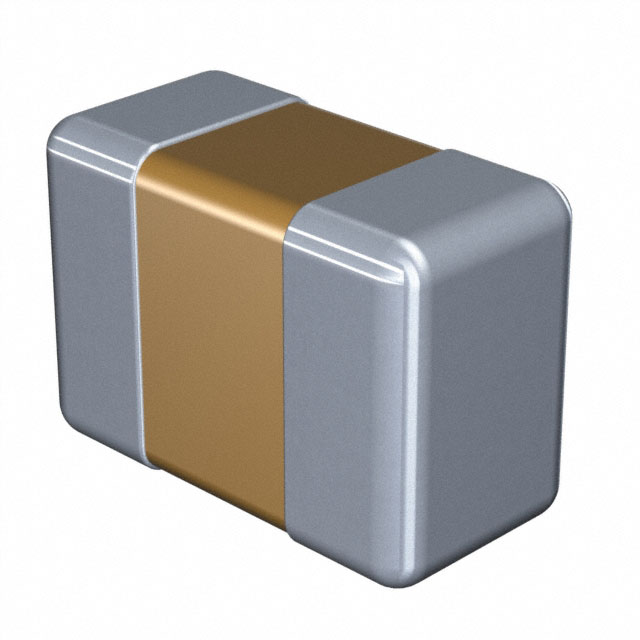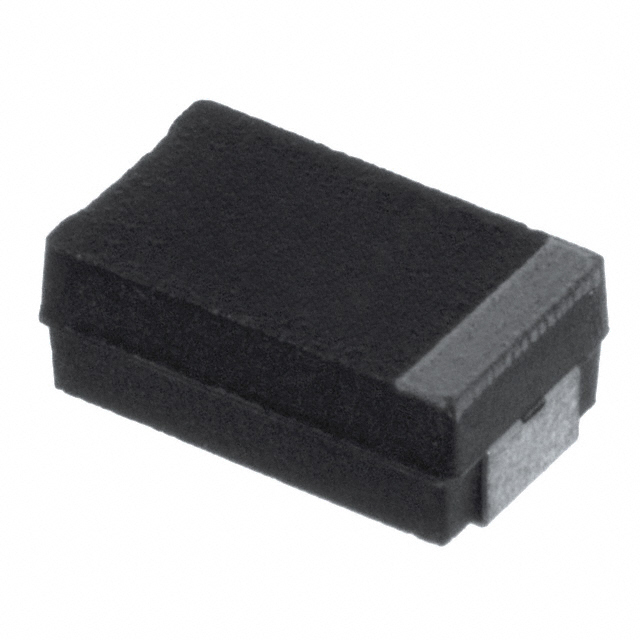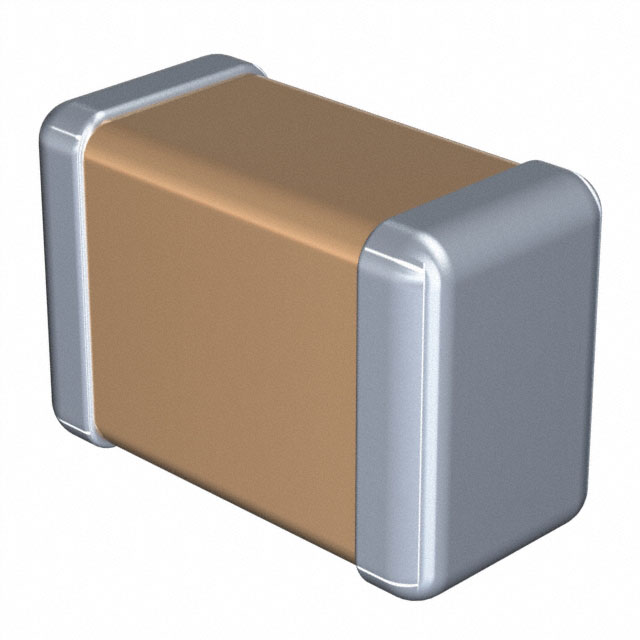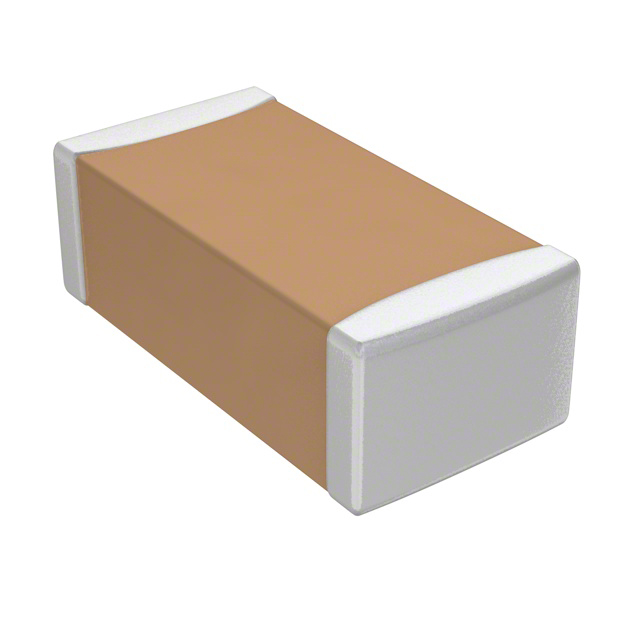
HDMI Modulator: Everything You Should Know
Global electronic component supplier ERSAELECTRONICS: Rich inventory for one-stop shopping. Inquire easily, and receive fast, customized solutions and quotes.
What is an HDMI Modulator?
An apparatus that transforms HDMI signals into radio frequency (RF) signals is known as an HDMI modulator, or more precisely an HDMI RF modulator. Through this conversion, coaxial cables may now transmit high-definition audio and video from HDMI sources, including set-top boxes, Blu-ray players, and gaming consoles. It makes it possible to distribute material to numerous TVs or monitors in both residential and business environments.

The digital HDMI signal is fed into the HDMI RF modulator, which then transforms it into a format that can be transmitted over radio waves. The encoder, which transforms digital signals into modulated RF signals, the modulator, which allocates the signal to specified RF frequencies, the output interface, distributes the RF signal through coaxial cables, and the input interface, connects to the HDMI source, are important parts.
Both HDMI modulator and RF modulator serve the purpose of signal conversion for distribution over coaxial cables, HDMI modulator is specialized for handling HDMI signals, ensuring high-definition quality, whereas RF modulator can work with a variety of signal types, primarily focusing on integrating older analog systems into modern RF networks.
Primary Features of HDMI Modulator
The primary features of an HDMI modulator, particularly an HDMI RF modulator, include several key aspects that enhance its functionality and usability. Here are the main features to consider:
1. Video Quality and Output Resolution
Most HDMI modulators support high-definition video output, typically at 1080p. However, some models offer 4K resolution support for those seeking superior image clarity and detail. The choice of resolution is crucial for ensuring a quality viewing experience, especially in settings where high-definition content is essential.
2. Connectivity Options
Connectivity is critical, as it determines compatibility with various source devices like gaming consoles, set-top boxes, and media players. It's important to check that the modulator supports the necessary input and output formats required by your devices to avoid any compatibility issues.
3. Latency and Synchronization
A good HDMI modulator should introduce minimal latency to ensure that audio and video are synchronized. This is particularly important for applications like live broadcasts or video conferencing, where delays can disrupt the viewing experience.
4. Number of Ports
The number of HDMI input ports available on the modulator is another important feature. A higher number of ports allows for connecting multiple devices simultaneously, enhancing flexibility and convenience in setups that require multiple sources.
5. Included Accessories
Many HDMI modulators come with essential accessories such as connectors, cables, and power adapters. Having these included can save time and additional costs associated with purchasing them separately, making installation easier and more efficient.
6. Form Factor and Installation Ease
The size and form factor of the HDMI modulator should fit well within your existing setup. Additionally, the ease of installation is crucial; a user-friendly design can help prevent common issues like damaged wires or loose connections during setup.
7. Value for Money
While price is a significant consideration, the overall value offered by the HDMI modulator should be assessed based on features, build quality, and performance. Higher-priced models may offer additional features, but it's essential to evaluate whether these justify the cost.
By considering these features, users can select an HDMI modulator that best meets their needs for high-definition audio and video distribution.
HDMI Modulator Applications
With the help of HDMI modulators, high-definition audio and video signals can be distributed across the current coaxial cable infrastructure in a variety of contexts. The following are a few of the major uses:
Home Entertainment Systems:
- Multi-room AV Distribution: Homeowners can distribute video from a single source, like a Blu-ray player or streaming device, to several TVs situated in various rooms by using HDMI modulators for multi-room audiovisual distribution. This makes seamless entertainment possible throughout the house and does away with the need for several HDMI cords.
- Home Cable TV Systems: Set-top boxes and other HDMI sources can distribute HD video to many TVs through the integration of HDMI modulators into home cable TV systems.
Commercial and Public Spaces:
- Hotels and Hospitality: A common application of HDMI modulators is the distribution of high-definition video to several TVs across a hotel from a central source, like a media server or satellite receiver. As a result, visitors can get excellent audio and video content across several channels.
- Digital Signage: Using a coaxial cable network, HDMI modulators are utilized in public areas, retail stores, and venues to send digital signage content to several displays. This is especially helpful in locations like stadiums, airports, and retail centers where centralized content control is required.
- Security Monitoring Systems: Multiple monitors can receive video signals from surveillance cameras via HDMI modulators, allowing for centralized monitoring.
Educational Institutions:
- Campus TV Systems: To disseminate video, live broadcasts, and instructional content throughout campus television systems, colleges and institutions use HDMI modulators. This guarantees that the same content is distributed simultaneously to all classes or common areas.
Healthcare institutions:
- Hospitals and other healthcare institutions employ HDMI modulators to give their patients information and entertainment in their rooms. Through the distribution of content to numerous patient rooms from a single central server, this technology provides ease and control.
Event Venues:
- Multi-display live event broadcasts are made possible by HDMI modulators, which are useful in large venues such as sports arenas, convention centers, and music halls. This enables visitors to watch the action from different parts of the space.
Organizations can enhance the watching experience for their audience by effectively distributing high-quality audio and video information to different locations by utilizing the capabilities of HDMI modulators.
If you're looking to explore RF modulator options beyond HDMI—such as analog TV systems, multi-channel coaxial setups, or embedded AV applications—don't miss our complete guide: Best RF Modulators & Modulator ICs for HDMI, Multi-Channel & Embedded Use. It covers advanced use cases and IC-level recommendations to help you select the right modulation solution.
How Does an HDMI Modulator Work?
To distribute high-definition audio and video content across coaxial cables, an HDMI modulator transforms HDMI signals into radio frequency (RF) signals. The steps involved in this process are as follows:
1. HDMI Input
An HDMI signal is sent to the modulator by a source device, like a computer, gaming console, or Blu-ray player. Usually, an HDMI cable is used to link this input to the modulator's input port.
2. Signal Processing
The modulator handles the digital audio and visual data after receiving the HDMI signal. There are two primary functions involved here:
Encoding: A transport stream format appropriate for radio frequency transmission is created by encoding the digital audio and video data. The data are ready for modulation in this stage.
Modulation: Following encoding, the signals are modulated onto particular radio frequencies. The HDMI signal is combined with a carrier wave created during this operation to enable transmission over RF channels. Common modulation protocols used in many digital broadcasting systems are QAM (Quadrature Amplitude Modulation) and ATSC (Advanced Television Systems Committee).
3. Coaxial Output
The RF signal is output via a coaxial wire following modulation. This makes it possible to route the signal to several TVs or displays in a business or residential setting. Just like in conventional cable TV systems, the RF signal can be divided and sent to several destinations.
4. Tuning on TV
Televisions need to be tuned to the precise RF channel that the modulator has assigned in order to receive the modulated signal. Users can access the HDMI material being broadcast through the coaxial cable by following this procedure, which is similar to tuning into a standard TV station.
To sum up, an HDMI modulator acts as a link between contemporary HDMI devices and conventional RF distribution networks, allowing high-definition video and audio to be sent to numerous screens without requiring a significant amount of rewiring. This technique is especially helpful in places like residences, hotels, and business venues where several TVs need to view material from one source.
Advantages and Disadvantages of an HDMI Modulator
HDMI modulators have several advantages and disadvantages that make them appropriate for some uses but problematic for others. Here's a thorough rundown:
| Advantages of an HDMI Modulator | Disadvantages of an HDMI Modulator |
| Signal Distribution: | Quality Loss: |
| - Wide Reach: HDMI modulators distribute high-definition content over existing coaxial cables, ideal for large venues (e.g., hotels, hospitals). |
- Compression: HDMI to RF conversion may cause signal quality loss due to compression, especially with lower-quality modulators. |
| - Multiple Devices: Allows sending the same HDMI signal to multiple TVs or devices without needing HDMI splitters or extensive cabling. | - Resolution Limits: Some modulators may not support full HDMI resolution, possibly limiting the output to 1080p or lower. |
| Cost-Effective for Large Installations: | Complex Setup: |
| - Utilizing existing coaxial infrastructure can be more economical than installing new HDMI cables, especially in environments with many displays. | - Setting up an HDMI modulator can be more complex than direct HDMI connections, requiring careful configuration (channel assignment, signal quality). |
| Long-Distance Transmission: | Interference: |
| - Can transmit signals over longer distances without significant quality loss, unlike HDMI cables, which degrade over long runs. | - RF signals can be susceptible to interference, which may degrade the quality of the transmitted signals. |
| Channel Assignment: | Latency: |
| - Users can assign specific RF channels for HDMI signals, allowing easy tuning on connected TVs or receivers. | - Slight delay in signal transmission, which can be problematic for time-sensitive applications (e.g., gaming, live streaming). |
| Compatibility: | Cost: |
| - Compatible with older analog equipment, enabling integration of modern HDMI sources with legacy systems using coaxial RF inputs. | - While cost-effective for large installations, standalone HDMI modulators can be expensive, particularly high-end models with advanced features. |
| Limited Features: | |
| - Typically do not support modern HDMI features such as ARC (Audio Return Channel), CEC (Consumer Electronics Control), or HDR (High Dynamic Range). |
In conclusion, HDMI modulators offer practical ways to distribute HD video across several screens, particularly in settings with pre-existing coaxial infrastructure. To ascertain whether they suit their unique demands, prospective users should balance the benefits over the drawbacks.
What does an HDMI Modulator do?
An HDMI modulator converts HDMI signals into radio frequency (RF) signals that can be transmitted over coaxial cables to multiple TVs or displays. Here's a summary of what an HDMI modulator does:
Converts HDMI to RF
- Takes the digital HDMI signal from a source device like a Blu-ray player, gaming console, or set-top box
- Encodes and modulates the HDMI signal into a format suitable for RF transmission
- Assign the modulated signal to specific RF frequencies for distribution
Enables Multi-Room AV Distribution
- Allows distributing HDMI content from a single source to multiple TVs over existing coaxial cable infrastructure
- Eliminates the need for multiple HDMI cables running to each TV
- Enables seamless entertainment throughout a home or building
Integrates with Analog Systems
- Bridges the gap between modern HDMI devices and older analog cable TV systems
- Enables integrating HDMI sources with TVs that only have coaxial RF inputs
- Allows upgrading to digital content distribution without replacing all equipment
Provides Flexible Installation
- The modulator can be located near the HDMI source, with the RF signal distributed over coax
- Coaxial cables can transmit the RF signal long distances without quality loss
- Allows assigning specific RF channels for the HDMI content for easy tuning on TVs
In summary, an HDMI modulator converts HDMI to RF, enabling the distribution of high-definition audio and video to multiple TVs over existing coaxial cable systems. This provides a cost-effective solution for integrating modern HDMI devices with older analog infrastructure.
How to Choose the Right HDMI Modulator?
Several important considerations should be made when selecting an HDMI modulator to guarantee top performance and device compatibility. Here is a guide to assist you in making a wise choice:
1. Compatibility
- Make sure the modulator works with every source device you intend to connect, including media players, set-top boxes, and game consoles.
- Check to see if it works with the required audio standards, codecs, and resolutions on these devices.
2. Output Resolution and Video Quality
- Choose a modulator that can support the output resolution you want, such as 4K or 1080p, to provide a high-quality watching experience.
- Verify that there is no discernible degradation in the modulator's ability to produce high-quality video output.
3. Latency and Synchronization
- When choosing a modulator, look for one with low latency to prevent audible lags between audio and visual. This is especially crucial for live streaming and video conferences.
4. Number of Ports
- Make sure that the modulator has enough HDMI input ports to support all of your devices at once by looking at its available port count.
5. Versatility and Expandability
- To improve usability, select a modulator with many functionalities, such as firmware upgrades, multi-channel output, or remote control capabilities.
- Think about how easily the gadget can be expanded to meet new needs or additions in the future.
6. Heat Dissipation and Durability
- Recognize the modulator's heat dissipation design to avoid overheating when using it for lengthy periods.
- Choose sturdy equipment, particularly if it will be utilized in busy or commercial settings.
7. Included Accessories
- Verify whether the modulator includes the required cables, connections, and power adapters before making a purchase. Including these can help you avoid wasting money and time.
8. After-Sales Service and Support
- Select brands that provide dependable post-purchase assistance and technical support to help you as needed.
- Read the warranty carefully to be sure that any problems that arise within the warranty period are covered.
9. Value for Money
- While cost is a factor, take into account the HDMI modulator's overall worth. More expensive versions could have superior build quality or more features, but it's important to determine whether these benefits outweigh the price.
You may choose the best HDMI modulator that satisfies your needs and improves your viewing experience by giving these things great thought.
How to Install the HDMI Modulator?
To install an HDMI modulator, follow these detailed steps:
| Installation Steps of an HDMI Modulator | Details |
| 1. Mounting the Modulator | - Choose a Location: Select an accessible spot near the HDMI source device and coaxial cable infrastructure, usually on a wall or rack. |
| - Secure the Modulator: Use proper hardware to mount it securely, ensuring ventilation space and future adjustability. | |
| 2. Connecting the Source Device | - Use HDMI Cable: Connect the HDMI source device (e.g., cable box, media player) to the modulator’s HDMI input using a high-quality HDMI cable. |
| 3. Connecting to Coaxial Cable Infrastructure | - Attach Coaxial Cable: Connect a coaxial cable to the modulator’s RF output and link the other end to the existing coaxial cable infrastructure. |
| 4. Powering the Modulator | - Power Connection: Plug in the modulator’s power supply or external adapter to a reliable power source, depending on the model. |
| 5. Configuring the Modulator | - Access Settings: Use the modulator’s controls or interface to configure channel assignment and modulation type. Refer to the manual for model-specific instructions. |
| 6. Testing the Setup | - Tune the TV: Verify the installation by tuning the TV to the assigned channel. Check video/audio quality and fine-tune if necessary. |
| 7. Securing and Labeling Cables | - Cable Management: Secure all cables to prevent tangling and label them for easy identification during future maintenance. |
| 8. Referencing Manufacturer’s Manual | - Consult the Manual: For troubleshooting or specific details, refer to the manufacturer’s manual for model-specific guidelines and tips. |
By following these steps, you can ensure a reliable and efficient installation of your HDMI modulator, enhancing ease of use and maintenance in the future.
Related Articles
- ·ICD Electronics: Tiny Lightning, Relentless Reliability
- ·Smart Pill Dispensing Electronics: From Missed Doses to Mission Control
- ·Conditional Access Module (CAM): The Pay-TV Gatekeeper Engineers Actually Enjoy Reading About
- ·NC Formula Semiconductor: The Blockbuster Guide You Didn’t Know You Needed
- ·Electrosurgery Electronics: Turning RF Into a Surgical Superpower
- ·Endoscopic Imaging Electronics: Tiny Optics, Big Picture
- ·Instrument Cluster: The Dashboard Wizard That Makes You Feel Like Iron Man
- ·X-ray & CT Electronics: From Kilovolts to Reconstruction
- ·MRI Core Electronics: From Quench to K-Space
- ·OKL Series PoL DC/DC Converters: The Bite-Size Power Bricks That Keep Your Board Cinematic















.png?x-oss-process=image/format,webp/resize,h_32)










